What is Building Maintenance?
Building maintenance is the work that is done to keep homes and businesses in good shape and fix problems when they happen. It includes things like cleaning, landscaping, and taking care of the electrical system. It tries to ensure that tenants always live in a safe, useful, and comfortable place.
Some of the most basic things that need to be done to keep a building in good shape are electrical system repairs, landscaping, cleaning, etc. The main goal of building maintenance is to ensure a safe, comfortable, and fully functional system.
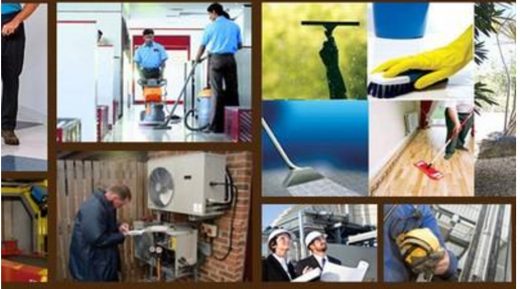
Fig 1: Building Maintenance
Courtesy: engineeringgoal.com
Importance of Building Maintenance:
• Maintenance is important to ensure the building will last longer and better.
• Climate conditions like rain, wind, humidity, and temperature make it so that buildings don’t last as long. So, the building has many uses and needs to be taken care of during its life.
• Wear and tear happens to a building because people live in it. Maintenance is necessary because of this.
• The building was built for something different. So, a building needs to be kept in good shape to serve all purposes during its life.
• Some building parts are getting weaker and need to be fixed.
• Building maintenance is important to keep the building looking nice.
• Buildings need to be taken care of so they don’t break down and cause accidents.
• Repairs must be done when an addition is made to an old building.
Types of Building Maintenance:
1. Routine Maintenance:
It’s important to do routine maintenance on the building to keep it working and prevent it from falling apart too soon. A building is made up of different parts in different places that are made of different materials. These can break down over time because of natural wear and tear. During design, the life of the parts is based on normal maintenance. For example, a wooden member is assumed to be painted regularly.
Routine maintenance includes many tasks that must be done regularly to keep the building in good shape. Some of these tasks must be done daily, some weekly, and some at regular intervals. Routine maintenance needs to be done after a building has been built to keep it in good shape and stop it from falling apart too quickly and becoming useless. Routine maintenance includes checking the electrical wiring, greasing the hinges, checking the emergency utilities, cleaning the trash, and so on.
2. Preventive Maintenance:
Preventive maintenance keeps the building from getting damaged and its structure in good shape. It helps make the building last longer. Preventive maintenance also includes sustainable precautions in the design and construction of a building so that it can withstand storms, floods, and other disasters.
3. Remedial Maintenance:
Even if all possible preventive measures are taken, and routine maintenance is done, a structure may deteriorate and get damaged, requiring corrective measures to fix. Remedial maintenance or repairs involve removing any decayed or damaged parts of the structure or fixing any flaws. For various reasons, the structure may show signs of damage or distress. Repairs or restoration work should be done immediately before the problem worsens and causes more damage to the structure.
Before doing any repair work, it’s important to know what caused the problem and where it is. If you fix any defect or damage without finding out what caused it, you could do more damage in the future instead of fixing the real ones.
Defects in Building:
A. Defects in Plaster:
i) Blistering:
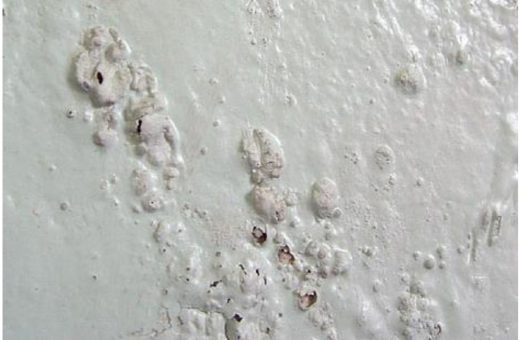
Fig 2: Blistering
Courtesy: civilengineersforum.com
Some of the surfaces of the plaster are getting bigger. When water gets through the wall, it can push the plaster forward. It makes a small bubble in the plaster, which is called blistering.
ii) Cracks.
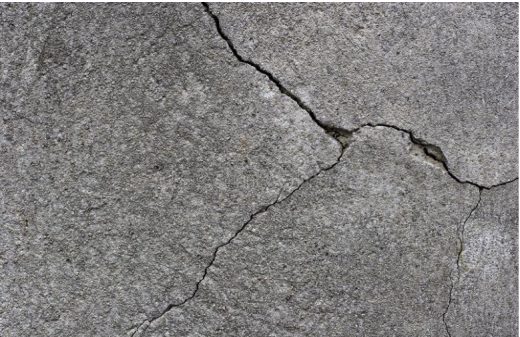
Fig 3: Cracks in Plaster
Courtesy: dreamstime.com
The plastered surface is starting to get small cracks. These cracks can be very small and hard to see or large and easy to see. Crazing is the formation of small cracks. Many things can cause cracks in plastered surfaces, like temperature changes, uneven surfaces, structural flaws in the building, bad work, too much shrinking, etc.
iii) Efflorescence:
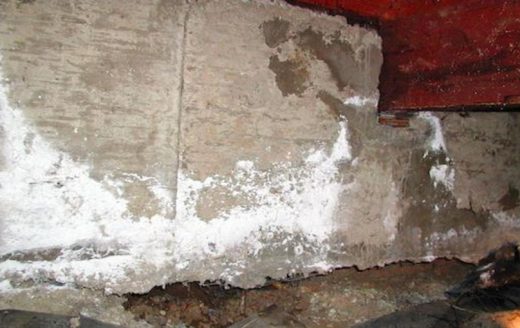
Fig 4: Efflorescence in Plaster
Courtesy: theinspector.org
Efflorescence is when white spots of soluble salt form on a surface that has been plastered. This flaw shows up on the surface of the plaster when soluble salts are in the materials used to make the plaster, as well as other building materials like bricks, sand, cement, etc. Even the water that is used to build things can have soluble salts in it.
iv) Peeling:
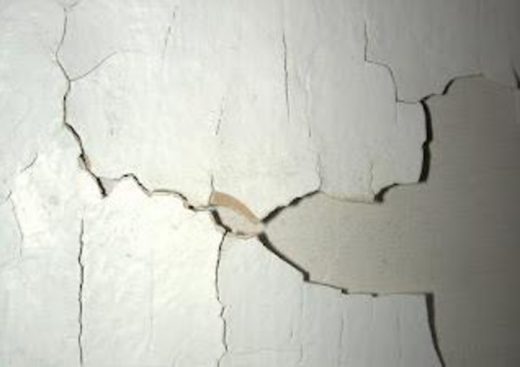
Fig 5: Peeling in Plaster
Peeling is a flaw that happens when some of the plaster on the surface falls off and a patch forms. Pilling happens mostly when the bond between coats of plaster breaks down.
v) Flaking:
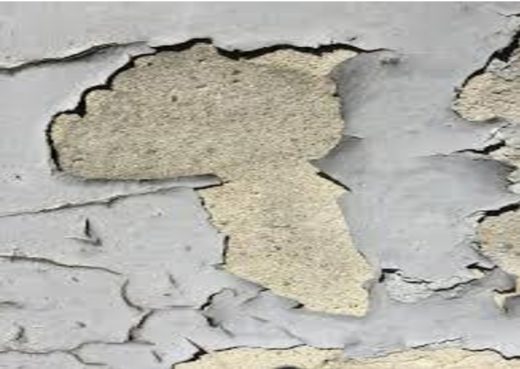
Fig 5: Flaking in Plaster
Courtesy: wallpaperflare.com
Flaking is when a plastered surface gets a small loose mass on it. It is usually caused by the lack of a bond between layers of plaster.
Remedial Measures of Plaster Defects:
• The quality of construction work should be raised.
• Uses class A bricks in your building.
• Don’t use salty water to put up the plaster.
• Before plastering, the efflorescence is cleaned off the brick.
• Before they are used to build the wall, the bricks are properly wet.
• After the plastering is done, the surface is properly allowed to dry.
B. Dampness in Building:
The main cause for the dampness is that water flows from the ground and the surface as rain, etc. Another reason is that sometimes the work isn’t done well, so the pot is made on the terrace floor. It collects rainwater or water from sprinklers, which seeps into the slab and makes the ceiling of the house damp.
Remedial Measures of Dampness:
• The DPC work is done using high-quality concrete to prevent it from leaching into the groundwater.
• Rainwater can be better contained by using hollow brick masonry.
• Putting bitumen or asphalt at the plinth level helps prevent pollution of underground water supplies.
C. Termite in Building:
Termites are the primary threat to wooden structures. It causes the wood to rot. Thus, two measures must be taken to safeguard a structure from termites:
i) Soil preparation at the site of construction:
The soil is treated with chemicals that kill termites available on the market. The chemical breaks down in the water, which is then sprayed onto the soil at the plinth level.
ii) Building maintenance after completion:
The inject method was used to treat the floor in the house. The chemical is sprayed on the wood and put the chemical on the doorframe
D. Leakage on Terrace:
If you store water on the terrace, make sure it is level. Work on waterproofing the terrace floor and fixing the pipes letting water out.
Repairing the flooring:
If there is damaged flooring, it must be professionally removed and compacted. Apply a fresh coat of mortar after compacting, and then set it back into place.
Conclusion:
Building maintenance aims to ensure that the building continues to serve its purpose and retain its value throughout time by repairing, replacing, and upgrading as necessary components when they become outdated. We can improve the building’s market value and give it a more upscale appearance through regular upkeep.
References
1. Ofori (IET), Engr. Emmanuel. “(PDF) BUILDING MAINTENANCE | Engr. Emmanuel Ofori (IET) – Academia.edu.” (PDF) BUILDING MAINTENANCE | Engr. Emmanuel Ofori (IET) – Academia.edu, www.academia.edu/35889648/BUILDING_MAINTENANCE. Accessed 6 Oct. 2022.
2. “Maintenance.” Maintenance – Designing Buildings, www.designingbuildings.co.uk/wiki/Maintenance. Accessed 6 Oct. 2022.
3 “What Is Building Maintenance? | MaintainX.” What Is Building Maintenance? | MaintainX, www.getmaintainx.com/learning-center/building-maintenance. Accessed 6 Oct. 2022.
4. “Maintenance of Buildings: Meaning, Aims and Types.” Your Article Library, 19 July 2016, www.yourarticlelibrary.com/building-engineering/maintenance-of-buildings-meaning-aims-and-types/85548.
5. Paul. “4 Common Types of Building Repair and Maintenance Services | Remdal.” Remdal, 23 Apr. 2020, www.remdal.com/blog/4-common-types-building-repair-maintenance-services.
If you have a query, you can ask a question here.


